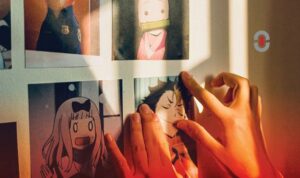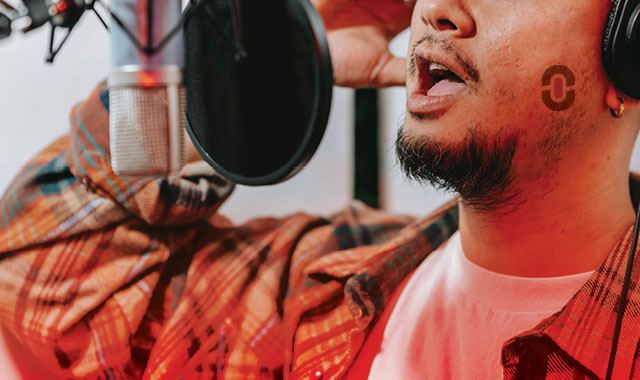Have you heard of a seiyuu? It wouldn’t be an overstatement to say that most of us have watched a creative video piece or listened to the radio where a voice-over recording was used without us hardly even noticing that it was there. The quality of a good voice-over recording cannot be exaggerated. It is the difference between feeling frustrated at the voice actors for not conveying the original message versus fully immersing yourself in a video or voice content that sounds natural and authentic. With this in mind, it’s important to find out the differences between dubbing and voice-over recording and what Seiyuu means in the context of Japanese. Let’s take a closer look.
Voice-over Recording and Dubbing, What Is Better?
Ever since the film industry changed from silent movies to adding voice to their recordings, it has undergone dramatic changes. Over the past 100 years, there have been new developments in recording sounds and speech on the screen to ensure that the audience can enjoy a fuller audiovisual experience. And with the onset of globalization where video content is made more global, reaching audiences across the world in their native language, a quality voice-over recording is critical.
Voice-overoice-over and dubbing are two separate but inter-related aspects of audiovisual communication and it is used in films, series, documentaries, DVD and Blu-Ray content, television programs, reality television, interviews and reports, video games, corporate videos, and commercials. With such a vast quantity of audiovisual material, it’s essential that there’s a high-quality performance by the voice actors to ensure that the video material is accurately and precisely translated and conveyed to the audience. So, let’s take a look at the differences between a voice-over recording and dubbing.
- Voice-overoice-over recording: when there is a motion picture that needs to be conveyed in a different language than the source language, say from English to Japanese or vice versa, a voice-over recording is a post-production process in which the original soundtrack is not removed. Instead, the volume is reduced and a dubbing track is superimposed on the audiovisual content. As a result, you’ll be able to hear the source language at a low volume and the target language at a higher volume. This is typically used in interviews in documentaries and on radio or news where the original speaker’s speech is reduced in volume to enable the audience to hear the same speech in their native language.
- Dubbing: In this post-production process, which can become very complex, the script of the original motion picture or audiovisual piece of content is given to a translator (usually a native speaker). They then translate the content into the target language while ensuring that the translation is as close to the original as possible without losing any of the content, they also make sure that the lip movements of the original actors are aligned with those of the voice-over actor, and they also see to it that the timing of the original speech is stuck to as closely as possible by the voice actor so that the piece sounds as original and authentic as it can be. This is all done in a dubbing studio. Then, once this is done, the new “voice track” is substituted over the original artists’ voices in audiovisual production and these are replaced with other actors. It is the preferred option for many countries which require that foreign films must be dubbed in their native language such as France. It is also highly popular in countries like Germany, Spain, and Italy. It’s also preferable to a voice-over recording because of the higher quality of the entire process and the final output of the audiovisual content.
The Challenges of Audiovisual Translation
Audiovisual translation is not an easy or straightforward process for several reasons. As mentioned above, the translator’s job is to not only match the original actor’s lip movements to the translated script but also to ensure that the timing is perfect. For example, the original speech may only consist of three words whereas the accurately translated version may consist of six words. As a result, there arises the possibility of mismatched synchronization.
In terms of synchronization, these challenges can be broken down into the following:
- Phonetic synchronization: this relates to the “consistency between the lip movements of the performers and the voices of voice actors.”
- Kinetic synchronization: “consistency between the translation and the performers’ movements.”
- Isochronic synchronization: “consistency between the duration of the translated sounds and the length of the performer’s enunciation, considering also the pace of the original phrase.”
However, there is more to be considered. For example, due to the creative nature of audiovisual content, there is often room for misinterpretation. This creativity needs to be well understood by a translator and then it needs to be conveyed to the audience in their native language. As you can imagine, this is a highly complex task and requires good knowledge of both countries, their customs, linguistic nuances, audience preferences, the accuracy of the translation, and more.
What is “Seiyuu” and the Specifics of Japanese Voice-over Recording
 Japan is a country with a highly complex language system. However, the opening up of borders across the world has resulted in the need for audiovisual translations from English to Japanese and Japanese to English as well as multiple other languages to ensure audiences get as much of an authentic watching and listening experience as possible. As a result, Seiyuu slowly but surely came on the scene in Japan. But what is Seiyuu and what do you need to know about them?
Japan is a country with a highly complex language system. However, the opening up of borders across the world has resulted in the need for audiovisual translations from English to Japanese and Japanese to English as well as multiple other languages to ensure audiences get as much of an authentic watching and listening experience as possible. As a result, Seiyuu slowly but surely came on the scene in Japan. But what is Seiyuu and what do you need to know about them?
In essence, Seiyuu is the Japanese word for a voice actor, irrespective of gender. It can therefore refer to a female voice actress or a male voice actor. In this regard, the Japanese will usually add a word to describe the gender of the Seiyuu in order to clarify whether a male or a female voice actor is being used for a particular piece of content. Interestingly enough, Seiyuu can also mean “voice superiority” and “voice gentleness”, which is quite apt given that Seiyuu is related to vocal performances.
So, what do Seiyuu do? In short, they are voice characters in anime series and movies, they dub foreign films and series, they do narration and radio work, and they also do voice-overs for commercials and museum guides. But it goes further than this because they can also act in various performances, sing, as well as create their own YouTube channels.
Because of the complexity of Japanese, Seiyuu need to be able to simultaneously capture the audience’s attention and interest and give an amazing performance. This is done through the inclusion of the right tones, being flexible to changes, improving storytelling, introducing characters and adding deeper layers and dimensions to them, helping the audience remember the content better, and being authentic in order to add credibility to the audiovisual piece.
Voice-over Recordings and Dubbing in a Nutshell
Voice-over recording has undergone major dramatic changes over the past 100 years. The film, cinema, series, and any other audiovisual piece that needs to be translated into a target language from the source language needs to be authentic and of high quality. In Japan, this is done by professional Seiyuu who record their performances in a professional dubbing studio. As a result of their performances, Seiyuu can convey a better story and provide a much more authentic watching and listening experience to their audiences by capturing their attention and better engaging with them through their work.
